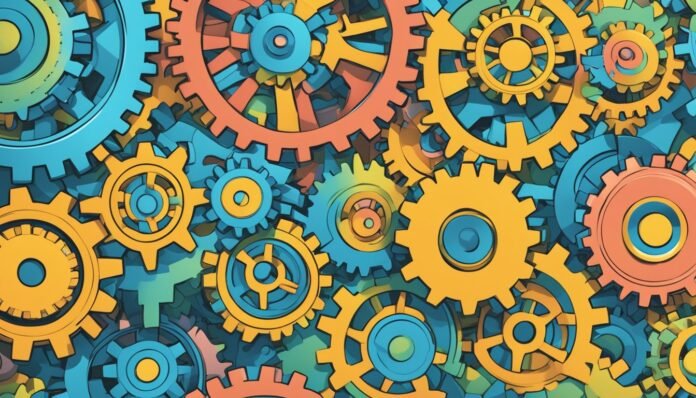When it comes to achieving success in a team, communication is key. Whether it’s in the workplace, on a sports team, or in a volunteer organization, effective communication is essential for achieving common goals. In fact, without clear and open communication, teamwork can quickly become unproductive and even detrimental to the overall success of the group.
Effective communication involves not only speaking clearly but also actively listening to others. When team members listen to each other, they gain a better understanding of each other’s perspectives and can work together to find the best solutions to problems. On the other hand, when communication is lacking, misunderstandings can arise and lead to conflict and frustration among team members.
In this article, we will explore the importance of communication in teamwork and how it can lead to success. We will discuss the different forms of communication that are essential for effective teamwork, as well as some tips for improving communication within your team. Whether you’re a team leader or a team member, understanding the importance of communication can help you achieve your goals and build stronger, more productive teams.
The Fundamentals of Team Communication
Effective communication is the foundation of successful teamwork. Communication is the process of exchanging information, thoughts, and feelings between individuals or groups. It is a two-way process that involves both speaking and listening. In this section, we will discuss the fundamentals of team communication, including understanding effective communication, barriers to communication in teams, and communication channels and styles.
Understanding Effective Communication
Effective communication is the ability to convey information clearly and concisely to others. It involves active listening, verbal communication, and written communication. Active listening is the process of fully engaging with what the other person is saying, understanding their point of view, and responding appropriately. Verbal communication is the use of words to convey information, while written communication is the use of written words to convey information.
Barriers to Communication in Teams
Communication barriers are obstacles that prevent effective communication from taking place. These barriers can be physical, emotional, or cultural. Physical barriers include distance, noise, and technology issues. Emotional barriers include negative attitudes, mistrust, and lack of motivation. Cultural barriers include language differences, different communication styles, and different cultural norms.
Communication Channels and Styles
Communication channels are the methods used to convey information. There are several communication channels, including face-to-face communication, email, phone calls, and video conferencing. Each channel has its own advantages and disadvantages. Communication styles refer to the way in which individuals communicate with each other. Some people are direct and to the point, while others are more indirect and prefer to use humor or stories to convey their message.
In conclusion, effective communication is crucial to the success of any team. It is important to understand the fundamentals of team communication, including effective communication, communication barriers, and communication channels and styles. By improving your communication skills, active listening, and understanding of communication channels and styles, you can help ensure that your team communicates effectively and achieves its goals.
Building a Positive Communication Culture
To achieve successful teamwork, building a positive communication culture is crucial. This involves creating an environment where open communication, transparency, trust, and empathy are valued. In this section, we will discuss the role of leadership in fostering openness, empathy and constructive feedback, as well as recognition and employee engagement.
Role of Leadership in Fostering Openness
Leadership plays a critical role in creating a culture of open communication. Leaders should encourage team members to share their ideas, concerns, and feedback. They should also lead by example and be transparent in their communication. This helps to build trust and encourages team members to be more open and honest.
To foster openness, leaders should also provide a safe space for team members to express themselves. This means creating an environment where team members feel comfortable sharing their thoughts and opinions without fear of judgment or retribution. Leaders should also actively listen to team members and acknowledge their contributions.
Empathy and Constructive Feedback
Empathy and constructive feedback are essential components of effective communication. Empathy involves understanding and acknowledging the feelings and perspectives of others. It helps to build stronger relationships and promotes a positive work culture.
Constructive feedback is also critical for building a positive communication culture. It involves providing feedback in a way that is respectful, specific, and actionable. This helps team members to improve their performance and fosters a culture of continuous learning and growth.
Recognition and Employee Engagement
Recognition and employee engagement are also important for building a positive communication culture. Recognizing team members for their contributions and achievements helps to build morale and motivation. It also encourages team members to continue performing at a high level.
Employee engagement involves creating a sense of purpose and belonging among team members. It involves providing opportunities for growth and development and fostering a culture of collaboration and teamwork. This helps to build a strong sense of community and promotes a positive work culture.
In conclusion, building a positive communication culture is essential for successful teamwork. By fostering openness, empathy, constructive feedback, recognition, and employee engagement, leaders can create an environment where team members feel valued, supported, and motivated to achieve their goals.
Strategies for Enhancing Teamwork Through Communication
Effective communication is the backbone of successful teamwork. When team members communicate well, they are better able to collaborate, problem-solve, and make decisions as a cohesive unit. Here are some strategies for enhancing teamwork through communication:
Conflict Resolution and Problem Solving
Conflicts and problems are inevitable in any team, but how they are handled can make or break a team’s success. Encourage open communication and active listening to resolve conflicts and identify problems early on. When conflicts arise, encourage team members to focus on finding solutions rather than placing blame. Brainstorming sessions and team-building activities can also help improve problem-solving skills.
Leveraging Collaboration Tools
In today’s digital age, there are numerous tools available to enhance team communication and collaboration. These tools can help teams stay organized, share information, and work together more efficiently. Consider using project management software, chat applications, and video conferencing tools to facilitate communication and collaboration.
Effective Decision-Making and Accountability
Effective decision-making requires open communication and collaboration among team members. Encourage team members to share their thoughts and ideas openly and without fear of judgment. When decisions are made, ensure that everyone is clear on their roles and responsibilities. Establishing clear accountability measures can help ensure that team members are held responsible for their actions and decisions.
By implementing these strategies, you can enhance teamwork through communication and improve team productivity and success. Remember, effective communication is a continuous process that requires ongoing effort and commitment from all team members.
Frequently Asked Questions
How does effective communication contribute to a team’s success?
Effective communication is essential for team success because it ensures that everyone understands their role, responsibilities, and goals. When team members communicate effectively, they can share ideas, provide feedback, and ask questions to clarify any confusion. This helps to prevent misunderstandings, missed deadlines, and misalignment in processes that can lead to project failures. Effective communication also helps to build trust, resolve conflicts, and boost morale among team members.
What role does communication play in workplace collaboration?
Communication is a critical component of workplace collaboration because it enables team members to work together effectively. When team members communicate regularly and openly, they can share information, coordinate tasks, and make decisions collaboratively. This helps to ensure that everyone is working towards the same goals and that tasks are completed efficiently. Communication also helps to build strong relationships among team members, which can enhance collaboration and improve team performance.
Can you provide examples of how communication impacts team performance?
Communication impacts team performance in many ways. For example, when team members communicate effectively, they can identify and solve problems more quickly, which can improve productivity. Communication also helps to ensure that everyone is on the same page, which can prevent misunderstandings and mistakes. In contrast, poor communication can lead to confusion, missed deadlines, and conflict, which can negatively impact team performance.
What are the consequences of poor communication within a team?
Poor communication within a team can have serious consequences. It can lead to misunderstandings, missed deadlines, and misalignment in processes, which can result in project failures. Poor communication can also lead to conflict, which can damage relationships among team members and lower morale. In addition, poor communication can lead to a lack of trust among team members, which can hinder collaboration and impede team performance.
How can team members improve communication for better teamwork?
Team members can improve communication by being proactive, clear, and concise in their communication. They should also be active listeners, seeking to understand others’ perspectives and asking questions to clarify any confusion. Team members should also be respectful and open-minded, willing to consider others’ ideas and feedback. Additionally, team members should be willing to provide constructive feedback and address any issues that arise in a timely and professional manner.
What strategies should teams implement to enhance communication among members?
Teams can enhance communication by establishing clear communication channels, such as regular team meetings, email updates, and instant messaging. They should also establish clear guidelines for communication, such as response times and preferred communication methods. Teams can also use tools such as project management software to facilitate communication and collaboration. Additionally, teams should encourage open communication and provide training on effective communication skills.




